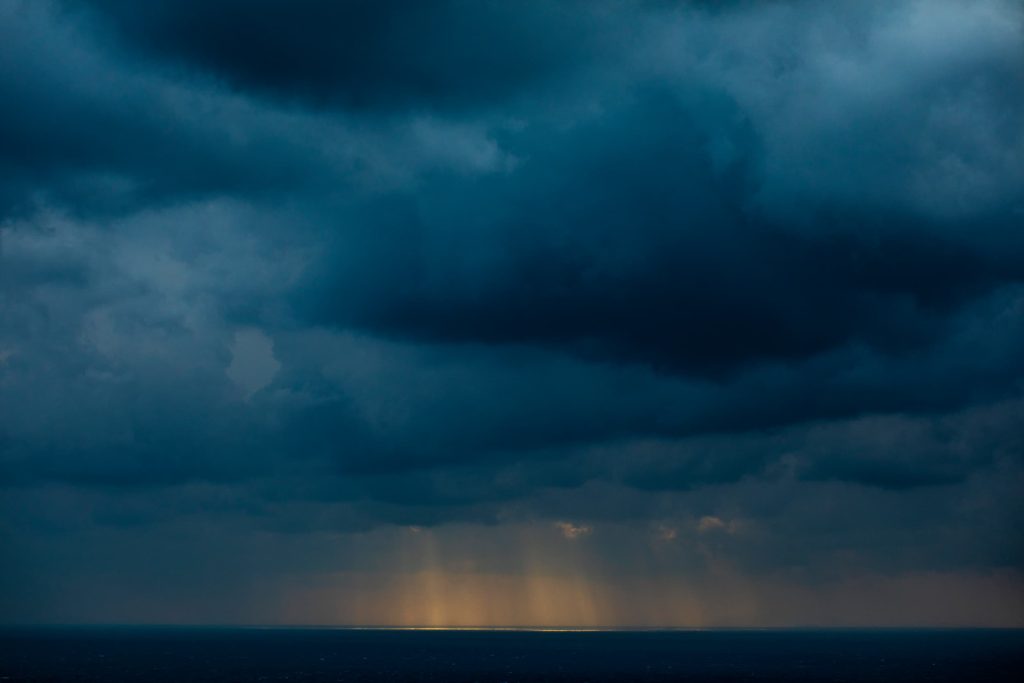
© 2020 Nomadict. All rights reserved.
Since 1991 and even before, Khalid’s photography has been shaped by the richness and diversity of Oman, his home country. In this story we learn about Oman’s unique characteristics, and about Khalid’s adventures, his photography, and interestingly, about his strategic approach toward creating a photo book.
As an Omani native, I have been fortunate to grow up in a country with diverse landscapes, unspoiled nature, and rich culture. Oman boasts golden beaches stretching over 3,165 km of coastline and majestic mountains that dot the nation’s landscape. Jabal Samhan, for example, is one of the stunning spots that offers breathtaking views of the Arabian Sea.
Other mountain ranges worth visiting include Jabal Akhdar, known as the “Green Mountain” in Arabic, for its picturesque terraced farms and stunning views of surrounding valleys. Wadi Bani Auf, with its towering cliffs and lush greenery, and Wadi Shab, featuring crystal-clear pools and waterfalls, are also stunning spots.
Shift your gaze to the golden desert of Sharqiya Sands, where the dunes stretch for miles, and you can explore nearby Bedouin villages to experience their traditional way of life. Oman, by the way, is also home to the largest contiguous sand desert in the world, known as the Empty Quarter.
The last natural photography spot I recommend today is Musandam Fjords, known for its towering mountains and deep blue waters. In addition to its natural beauty, Oman’s rich history is showcased through its majestic forts and castles designated by UNESCO, ancient mosques, and striking homes.
For instance, Muttrah Souq is a historic market worth visiting, while Nizwa Fort, built in the 17th century as a stronghold for the ruling dynasty of Oman, is one of my top photography spots too.
Lastly, Misfat Al Abriyeen, a picturesque village known for its traditional mud houses and lush gardens, and Salalah, a beautiful city in the southern region, are also recommended.
I used to work as a tour guide in Oman, and that time of my life was incredible. I made new friends from every corner of the world, and because of the people I met and the bonds I created, my journey as a photographer began. “The greatest gift of life is friendship, and I have received it.”
I was gifted my first camera by my father when I was ten years old. I had no idea that this Kodak Ektralite would initiate a lifelong career that would give me a way to learn more about the world every single day. Since that day, photography has always taken up a lot of my time, but mainly as a hobby. In 1991, when I was in university, my passion and purpose really began to take shape. I enrolled in the New York Institute of Photography to study what I loved on the weekends, which was the pedestal that propelled me headfirst into the world of photography – and I never looked back.
Comprising 11 governorates, Oman is nestled in a truly unique location along the southeast coast of the Arabian Peninsula, with golden beaches spanning 3,165 km of coastline, connecting not only our nature, but our history, our culture, and our historical alliances – particularly with Africa and the East. My homeland is dotted with majestic mountains that spread all across the nation’s landscape. Many of the mountains are etched with caves, carved by the hands of time. The picture is made complete by Wadis – post-rain collected waterfalls – which shower down on the villages to sing an eternal song of life and its grandeur.
It is like being with family and friends – it’s home, and there’s nothing like it. One area in particular that I hold close to my heart is the eastern coastal road that connects Muscat in the North and Dhofar Governorate in the South. This incredibly unique location in the Sultanate of Oman led to the revival of the nation’s scattered majestic mountains. Here, the Al Hajar mountain ranges reach far and wide to Oman’s northern areas, expanding into the Musandam mountains. To say this area is a photographer’s dream would be an understatement.
We can shift our gaze from the mountains to the golden desert of Sharqiya Sands or to the coastline with sparkling turquoise waters that emanate the purity and unspoiled perfection of nature. Each time of year brings something new to explore and indulge in – even in Monsoon season. During this time, Southern Oman hosts the breath-taking Kharif Salalah Festival, ushering in locals and international visitors from the nearby Gulf states and beyond. From authentic Omani barbeques to freshly harvested coconuts, Kharif Salalah is something the entire nation – and the neighboring Gulf states – look forward to collectively. My home is bursting with rich heritage and cultures – an example being the beautiful dresses worn by the women of our country, distinguished by bright colors, and each one is unique. Every single governorate of Oman is different and distinct, characterized by traditional arts, miscellaneous cultural customs, and striking diversity of plains, mountains, valleys, and wildlife.
I made new friends from every corner of the world, and I encouraged each person I encountered to visit my beautiful home country of Oman – that’s how it started. I wanted to make their experiences unforgettable, so I organized private tours for them when they visited me. People began to talk about what I was doing, and I started receiving requests from people who wanted to visit Oman. Soon, I hope to launch special Oman tour packages on my website. The COVID-19 pandemic has delayed this process, but hopefully, I can make these packages live sooner rather than later!
While being a tour guide might seem very different from being a photographer, for me, it’s all connected. It’s all rooted in the way Oman has influenced me my whole life. This is one of the main reasons my passion for photography grew so much in the first place. I truly believe that, when you’re passionate about something, it shows in your work. Just ask my Photography and Visual Cultures teacher from back when I was studying! He assured me that, with practice, I would become a successful professional photographer one day. His words encouraged me so much that I turned his “premonition” into reality! I also attribute a huge part of my success to the support, mentorship, and direction of my friend – Abdulrahman Al Hinai – one of the greatest photographers in Oman’s history. Abdul’s photography style is well-known, capturing authentic “life moments” and the people that call the nation home.
Earlier on in my career, I’d often portray the quintessential Omani man and daily Oman life more than nature and travel – with the latter being my recurrent theme today. When editing photos back then, I’d always focus on the rich and authentic color palettes offered by nature and everyday life in Oman. While traveling, it became clear to me that there is a stark contrast between everyday life in Oman and that of certain other East Asian countries – not to mention European nations – particularly in colors and the usage thereof in different communities. The nature in each country is also drastically different. Here in Oman, we are more defined by hues of brown and blue peppering the mountains and the beaches that stretch across the coast. In the agricultural region of Vietnam, for example, one would find a greener color palette, accompanied by red cultural links that symbolize struggle, revolution, and victory.
Every photograph I capture is unique, but there is one common thread – I want the viewer to experience the beauty as I felt it when I was there. I want each photograph I take to be a portal that escorts the viewer into the very spot in which I stood when capturing the photo – and I love the fact that I can maximize this even further through editing. Editing allows me to accentuate the beauty of the focal content while strengthening the feelings experienced by the viewer when gazing at the photograph. Editing also allows me to inject more of my personality into every photograph I take.
After editing an image, I usually leave it for a while. Sometimes, it’s a day. Other times, it’s a week. This way, I can come back and look at the image through a new lens and imagine what it would be like for a viewer to gaze at the image for the first time. If I like what I see, only then do I approve and publish the photograph on my website and social media. It also helps me take an unbiased viewpoint and return as a “judge” of my own editing work – with no emotion attached. If there’s anything that needs to be changed, I’ll always detect it when I return with this second eye and follow-up assessment.
Another thing that I do (which would probably confuse a lot of photographers…) is that I don’t hurry to download the pictures from my camera immediately upon returning from a trip. Instead, I usually wait a day or two and return when my emotions are a little lower and I can carefully choose the best photos with an unbiased vision. I love this because it’s like I’m seeing the places in the images for the first time all over again.
This is what truly makes me happy, and it’s an honor to be able to live my passion every day. And while every photographer is different, it’s probably safe to say that publishing a book is a lifelong dream every one of us shares. But many never get there, because the process of preparing and publishing such a book is far from easy – especially when you have a 30-year photography archive to filter through, as was the case with me. And that’s not even talking about choosing a topic for the book, coupled with the initial set of pictures. This is a crucial foundational part of the process, seeing as it establishes the entire book’s identity.
Since the dawn of my photography career, I’ve been building up my portfolio and collection behind the scenes. Even before I transitioned more into nature photography and was still focusing on “daily life”, I had started to build up a huge archive of images covering daily life in Oman. When I first started planning my photography book about Oman, I was incredibly grateful to my past self for taking this initiative! I decided to make my photography book about both – the union and harmony of nature and man. And I am so glad I did. I do think that having that archive saved me a lot of trouble. In my opinion, when photographs are initially archived and revised, it makes the selection and book preparation process much, much easier. The accessibility of digital photography and the vast number of editing programs available help, even more, making the process much faster and easier when compared to pulling all-nighters in dark rooms, scouring, and developing film endlessly.
It took an incredibly long time to prepare the book – a process that first started brewing back in 2012. Finding the time to compile my best work was challenging to say the least, especially amidst the demands of daily life, family, and work which, of course, never paused for a moment. So, I had to prepare the book often late into the evening and in the early hours of the morning.
I went through several photo selection cycles and, in each one, I’d filter through the images and find ones I’d be willing to drop – but at the same time, I’d find more I wanted to add-in. Again, stepping away for a few days or weeks would empower me to return with fresh eyes and a new, unbiased view.
Finally, once all of the final photos are selected – after a long and trying process – it’s time to arrange the images. Ask any photographer, and they’ll tell you that this varies greatly from one book to another – and it very much depends on the photographer’s chosen field and subject matter. Generally, pictures are arranged according to theme, structure, and/ or coloring.
Before sending the book for final printing, I first prepared a set of digital prints through Blurb’s website (www.Blurb.com). But Blurb is just one example of such a website that provides digital printing services – others include Saal, Whitewall, and PhotoBox among many others. I’m exceptionally grateful to Blurb which helped me visualize my final book up to 95% so that I could confidently make modifications and additions as I saw fit. Seeing as this is my first photo book – and with its specific subject matter surrounding my homeland of Oman – I was obsessed with making absolutely sure that the book contained only the most picture-perfect imagery that would effortlessly reflect the magnificence of Oman’s land, people, and cultures.
In my humble opinion, anyone who is publishing their first book should specify the book’s subject, purpose, goals, and target audience well in advance. In my case, I asked myself three questions: What is the book’s theme? What do I want to achieve as a photographer? Who is my target market? These three simple questions made a huge difference in the process, making the image selection journey – not to mention all technical matters – much, much easier.
I learned a lot from this project, but I consider my travel and photography journey one long, unending adventure rather than a series of singular projects. I believe that travel, in general, has deeply contributed to my growth as a visual artist, along with the chance to constantly meet new people and other photographers in my field. Travel is the blessing that introduced me to my fellow humans who have shared their own stories and anecdotes of their home countries, their nature, and their history.
One of the things I learned is that photographing a place alone is a very static thing, and it is the responsibility of the photographer to inject soul into every scene they encounter. When the photographer truly lives the place’s story, he/she transmits a truly unique image to the end viewer through their lens – one that immediately takes the viewer to the very spot in which the image was captured so they can indulge in the same spirit and energy. I’ve also found that, when I visit a country for the second or even third time, I always learn something new. I’ll have new conversations with local people and unearth even more hidden stories that I hadn’t discovered during previous visits. This enables me to photograph the same thing all over again, through an entirely different lens and with a completely different perspective.
In particular, I recall one trip to the European village of Manarola at the Ligurian Sea, coupled with my journey to the popular train market in the Kingdom of Thailand. Here, I captured more breathtakingly impressive moments than I can ever explain in writing. For example, take the famous image of Manarola showcasing the village’s stance on the cliff leaning towards the ocean. This very image has been my computer’s desktop screensaver for many years, and I knew in my heart that I had to visit Manarola – but it wasn’t until a work assignment pushed me onto the plane in 2015 that I finally entered the village for the first time myself. I can’t describe that feeling of being in the place I’d gazed at through my computer endlessly. The village’s captivating aura was begging to be captured, and I did, of course. But of course, what you see when you stand in front of something is very different from anything you’d see on a computer screen. If I ever visit Italy again, Manarola will definitely be on my list of pit stops again.
And as for my visit to the popular Maeklong Train Market in the Thai city of Songgram, I was fascinated by the vibes of daily life. The market is situated in an area with about 5-10 feet of the railway on either side, dotted with friendly local vendors selling their deliciously fresh fruit, vegetables, meat, fish, and spices – and, of course, some authentic local fashion. The nature of this unique location forces sellers to halt sales six times a day to allow trains to pass safely and keep sellers, buyers, and produce out of harm’s way. The energy is unlike anything I’ve ever seen before, and it was an honor to capture it through my lens. I also had the chance to meet and build lifelong relationships with many of the sellers here.
That’s one of the things I love most about photography – it goes so far beyond taking pictures. It’s about meeting people, exploring cultures, building your collection of memories, and marking the beginning of friendships that last forever. It’s about conveying a message without any words and having an impact across the globe using the universal language of imagery. It’s been a long road so far, and I can’t wait to see what the next 30 years of photography have to hold…
Would you like content like this sent to your inbox?
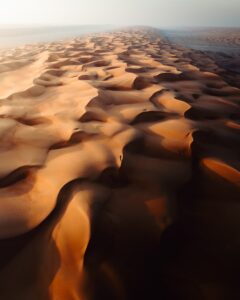
In this article featuring Witold Ziomek, we explore five essential principles for crafting powerful sunset dune photography through editing. Through a practical example, Witold shares his process of editing his award-winning photograph, alongside valuable insights he has gained as a dedicated traveler and photographer.

This article chronicles Mitchell Leong’s journey, who found solace and purpose through his lens. From the rugged expanses of the Canadian Rockies to the ethereal allure of starlit nights, each photograph tells a story of resilience, exploration, and the profound impact of the natural world. Through his lens, he seeks to bridge the gap between science and art, using photography as a tool for conservation and storytelling. Along the way, he shares invaluable lessons learned, from embracing fear to trusting in the power of storytelling.
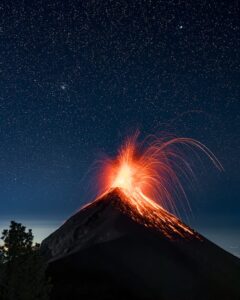
This article follows Phil’s path as a photographer, sparked by his unwavering love for exploration and ignited during post-university travels. Through his lens, we traverse Phil’s transformative journey across captivating landscapes, from the rugged beauty of the Canadian Rockies to the fiery spectacle of Volcán de Fuego in Central America, where he captured the winning shot.
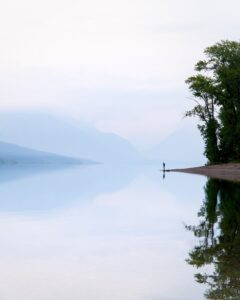
In this article, we delve into the journey of photographer Amirali, whose passion for photography was ignited amidst the challenges of academic life and the chaos of the pandemic. Through his lens, we witness Amirali’s transformative exploration of landscapes, from the serene landscapes of Finland to the mystic scenes of Montana’s nature, where he took a shot that won the Best of the Week.
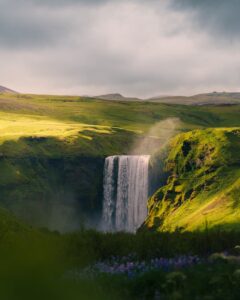
Inspired by a newfound love, Michael transforms the blank pages of his life into a vibrant canvas of nature and exploration. In this article, you can read about the profound lessons learned—from prioritizing living over routine to the art of editing and the magic of impromptu adventures—and witness the evolution of a photographer’s passion amid the breathtaking landscapes of Denmark and Europe.
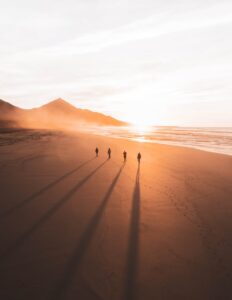
In 2017, Mathieu Morel’s first trip to Iceland marked a turning point in his photography journey. His photograph taken at Cofete Beach in Fuerteventura reflects the lessons he’s learned along the way. Thanks to the support of our community’s votes, he emerged as the winner of our weekly contest.
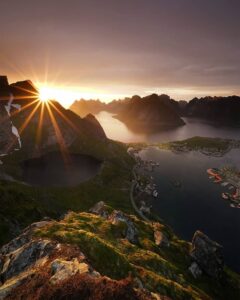
Barbara Thoeny won our weekly contest thanks to a golden hour photo in the beautiful Lofoten Islands. This article teaches us about her winning shot, passion for capturing the northern lights, and most valuable experiences as a solo traveller and photographer.
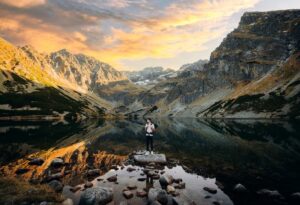
Meet Konstantin, a passionate traveler and photographer inspired by those who use their cameras to capture the world’s beauty and meaning. He aims to make each photo as unforgettable as the moment itself, emphasizing the importance of a positive attitude and cherishing the present moment.
© 2020 Nomadict. All rights reserved.
